| Utter Devastation: Lakeview |
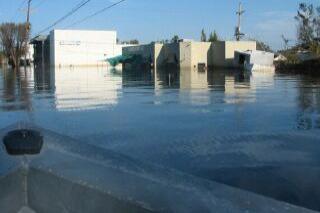
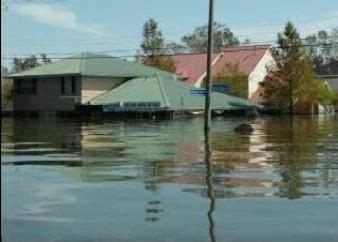
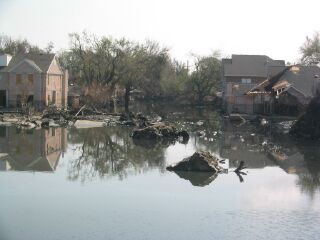
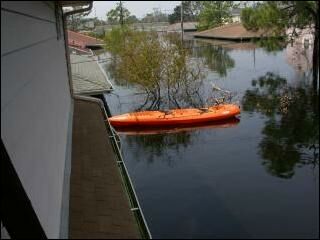
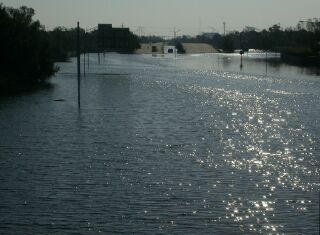
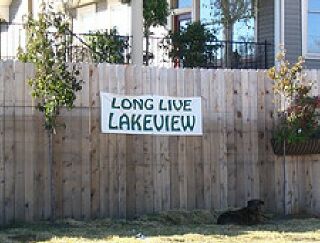
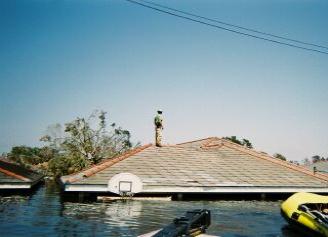
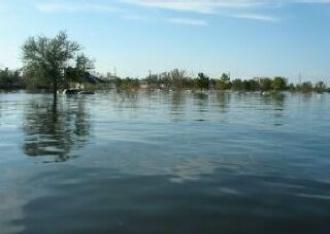
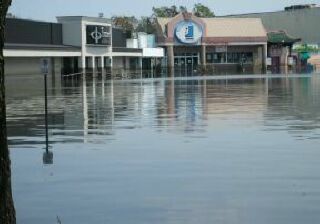
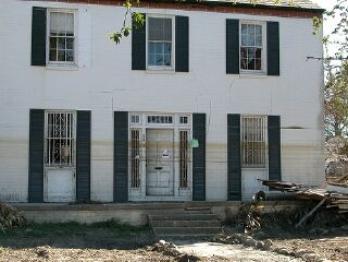
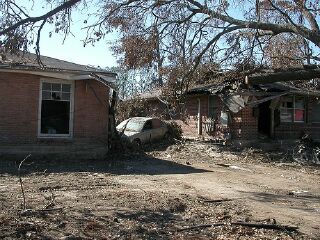
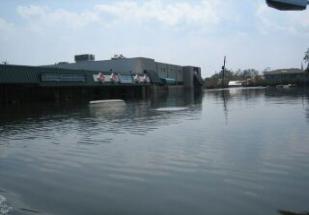
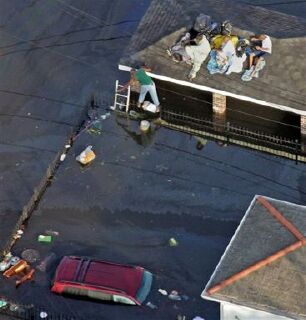
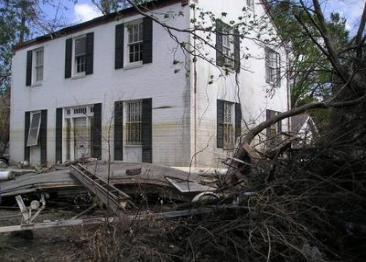
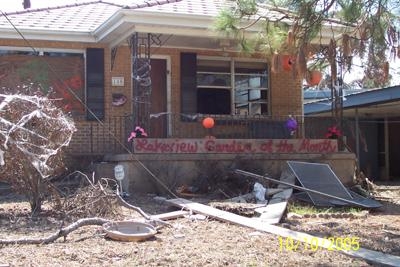
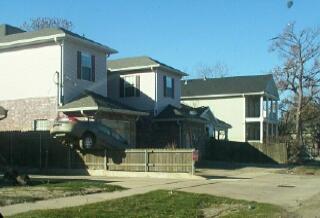
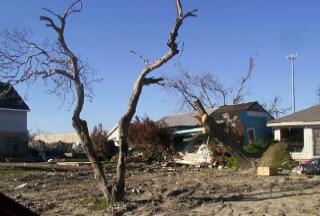
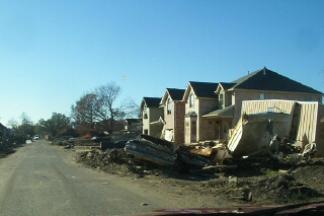
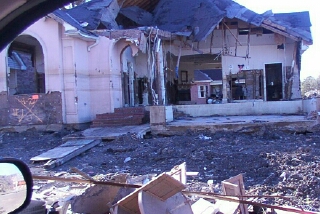
| Most of the photos on this page were taken on Bellaire Drive, the street where I had once lived (but had moved before Katrina). While living there, I'd trusted the U.S. Army Corps of Engineers to keep my family safe; trusted their word that the flood walls could weather up to a category 3 hurricane. That trust was misplaced. Flawed design and construction of the canal's floodwalls caused their collapse, flooding Lakeview and much of the city. (By the time Katrina reached the city, she was only a category 1.) Other poorly planned and constructed levees of the Corps' failed, also, including the MS River Gulf Outlet, the IntraCoastal waterway, London Avenue Canal and the Industrial Canal, devastating areas like Gentilly, N. O. East, the Upper & Lower Ninth Ward and St. Bernard Parish. The Corps, finally, when the facts could no longer be disputed, took "accountability" for the greatest engineering failure in our country's history. (Accountability, but not financial responsibility.) Read more about the Corps of Engineers: Levees.org |
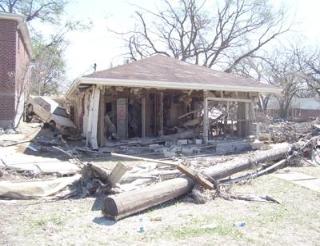
| The photos in this section are of shopping centers on Robert E. Lee Boulevard. |
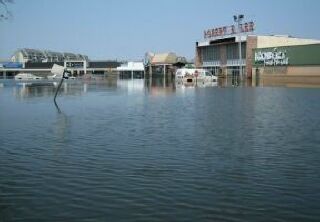
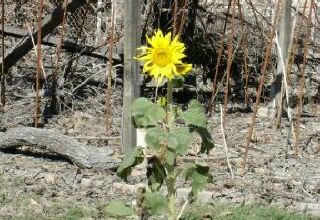
| The sign on this house reads "Lakeview Garden of the Month." |
West End Boulevard Canal Boulevard
| A sunflower rises amid the wreckage of a house in Lakeview. |
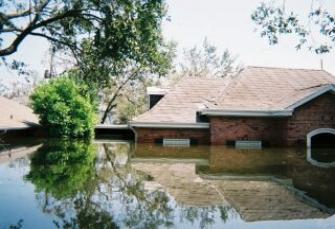
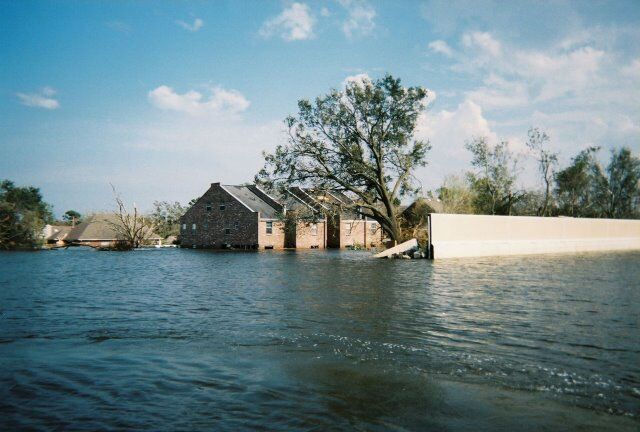
I don't like to admit it, but it was 4 months before I could gather the courage to drive through the
neighborhood of Lakeview, where I'd lived several years before. And now, two years later, I still have
no adequate words to describe what I saw. The truth about describing Lakeview--or any of the
devastated neighborhoods of New Orleans--is this: Words do it no justice. You had to be there.
It wasn't that a particular home was in ruins--water marks up to the roof, orange symbols on the door
denoting how many bodies of people and animals were found inside, windows agape, exposing the
mildewed remains of someone's unsalvageable belongings, with no sign of life.
It wasn't that my old block, the homes of former neighbors I knew so well, were in ruins--water marks
up to the roof, orange symbols on the doors, windows agape, with no sign of life.
It was that house after house, block after block, dozens of blocks after dozens of blocks, hundreds of
blocks after hundreds of blocks, were in ruins--water marks up to the roof, orange symbols scrawled
on the doors, windows agape, with no sign of life.
All of Lakeview, the homes of over 9,000 people, stood silent and empty. The stores. The restaurants.
The playgrounds. The movie theaters. The churches. The schools. The banks. The gas stations. The
doctors' offices. The pharmacies. The dry cleaners. The beauty salons.
Everything. Every home and every business...battered, mildewed and empty.
Except for a few utility workers, there were no people in the hundreds of blocks I drove through. No
dogs. No cats. No squirrels. No birds. No sound. No color, except a dull gray-brown.
Just me and my memories of happier times.
Finally, I spotted a small area of green color on the playground on Fleur-de-Lis Avenue, where my son
had played as a child. I stopped to see what it was. It turned out to be a cluster of green grass, the
first living thing I'd seen in Lakeview that day. It was then that I finally allowed myself to cry.
Until then, it had all seemed so hopeless. But grass--alive and growing on a playground--that's
something you could hang your hopes on. -- Nancy
neighborhood of Lakeview, where I'd lived several years before. And now, two years later, I still have
no adequate words to describe what I saw. The truth about describing Lakeview--or any of the
devastated neighborhoods of New Orleans--is this: Words do it no justice. You had to be there.
It wasn't that a particular home was in ruins--water marks up to the roof, orange symbols on the door
denoting how many bodies of people and animals were found inside, windows agape, exposing the
mildewed remains of someone's unsalvageable belongings, with no sign of life.
It wasn't that my old block, the homes of former neighbors I knew so well, were in ruins--water marks
up to the roof, orange symbols on the doors, windows agape, with no sign of life.
It was that house after house, block after block, dozens of blocks after dozens of blocks, hundreds of
blocks after hundreds of blocks, were in ruins--water marks up to the roof, orange symbols scrawled
on the doors, windows agape, with no sign of life.
All of Lakeview, the homes of over 9,000 people, stood silent and empty. The stores. The restaurants.
The playgrounds. The movie theaters. The churches. The schools. The banks. The gas stations. The
doctors' offices. The pharmacies. The dry cleaners. The beauty salons.
Everything. Every home and every business...battered, mildewed and empty.
Except for a few utility workers, there were no people in the hundreds of blocks I drove through. No
dogs. No cats. No squirrels. No birds. No sound. No color, except a dull gray-brown.
Just me and my memories of happier times.
Finally, I spotted a small area of green color on the playground on Fleur-de-Lis Avenue, where my son
had played as a child. I stopped to see what it was. It turned out to be a cluster of green grass, the
first living thing I'd seen in Lakeview that day. It was then that I finally allowed myself to cry.
Until then, it had all seemed so hopeless. But grass--alive and growing on a playground--that's
something you could hang your hopes on. -- Nancy
| This photo, taken from the vantage point of the 17th Street Canal, looking into Lakeview, is courtesy of Kevin M. Himel. |
| Photo thanks to Kevin M. Himel. |